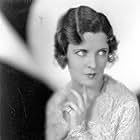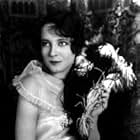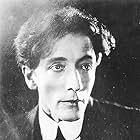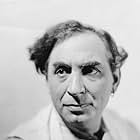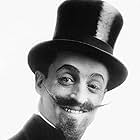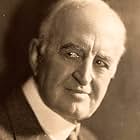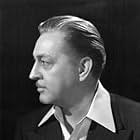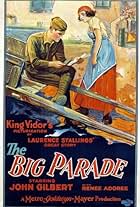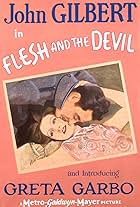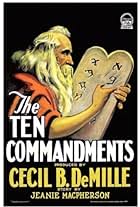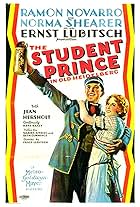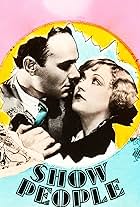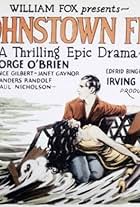IMDb RATING
7.8/10
8.1K
YOUR RATING
A Jewish prince seeks to find his family and revenge himself upon his childhood friend who had him wrongly imprisoned.A Jewish prince seeks to find his family and revenge himself upon his childhood friend who had him wrongly imprisoned.A Jewish prince seeks to find his family and revenge himself upon his childhood friend who had him wrongly imprisoned.
- Awards
- 4 wins
Nigel De Brulier
- Simonides
- (as Nigel de Brulier)
Reginald Barker
- Chariot Race Spectator
- (uncredited)
John Barrymore
- Chariot Race Spectator
- (uncredited)
Lionel Barrymore
- Chariot Race Spectator
- (uncredited)
Clarence Brown
- Chariot Race Spectator
- (uncredited)
Storyline
Did you know
- TriviaThis film had an "extra" cast like no other. Many Hollywood stars showed up on set to watch the shooting and were pressed into service as extras, especially in the chariot race. In addition, many who would later become Hollywood's top stars, but who were at the time just struggling actors, were also in the crowd scenes as extras. Among well-known and soon-to-be-well-known names "working" in the film were John Barrymore, Lionel Barrymore, Joan Crawford, Gary Cooper, Marion Davies, Myrna Loy, John Gilbert, Douglas Fairbanks, Clark Gable, Harold Lloyd, Carole Lombard, Janet Gaynor, Fay Wray, Mary Pickford, Colleen Moore, Lillian Gish, Dorothy Gish, Samuel Goldwyn and Rupert Julian.
- GoofsAt one point in the chariot race a man in modern clothing - light-colored shirt, long pants, dark shoes - can be seen running out of the crowd onto the track and waving his arms at the camera. That was assistant director William Wyler, who saw that one of the chariots - out of camera range - was approaching the curve of the track too fast and Wyler was signaling the director to have the crew cleaning up a crashed chariot to get out of the way.
- Quotes
Jerusalem citizen: What chance has a Jew against a Roman?
- Alternate versionsMusic and sound effects were dubbed into the silent film for a 1931 re-release.
- ConnectionsEdited into Hollywood: The Dream Factory (1972)
Featured review
Of all motion picture genres, the ancient world epic is the only one in which the silents were usually superior to their talking counterparts. With the emotional distance of a bygone age, the pompous dialogue, not to mention the focus on the spectacular, here, if ever there was one, is a type of story best told purely in images.
The 1925 Ben-Hur is probably the finest of all the 1920s epics. A lot of this is down to its (uncredited) producer, "boy-wonder" Irving Thalberg. Although there is very little consistency in the genres or kinds of story in Thalberg's productions, his hallmark seems to be that he was willing to push the boat out creatively. He never just plumped for the most commercial option, yet never lost sight of what was entertaining. Hence his pictures were almost always hits, but they were never mere instant-appeal audience-fodder. He refused to compromise on quality in any department, and in Ben-Hur the editing of Lloyd Nosler and the cinematography in particular deserve honourable mentions. Thalberg had taken over the project half-way through shooting, and it's exemplary of his belief in quality over easy profits that he recast virtually ever actor, changed the crew and scrapped the old footage, sending the budget skyrocketing but ending up with a finer finished product.
Among the replacement crew was director Fred Niblo. While there are a few other directors associated with this production, they shouldn't really be counted as most of their footage was ditched when Niblo was brought on board. And he is really perfectly suited to this material. His sense of movement and rhythm, especially in crowd scenes, is exceptional. A great example is in the leper cave, when Miriam and Tirzah exit away from camera, screen left, a leper crawls towards the water from screen right, echoing their movement. Niblo was also one of the best action directors of his era, as evidenced in the highly imaginative sequence of images in the sea battle. For the chariot race the emphasis is on speed, partly because Thalberg offered a $100 prize to the winner, but also because the camera rarely takes the position of a spectator, almost constantly moving with the chariots. The excitement is heightened because the camera cars occasionally move faster when behind a chariot or slower when in front of chariot, to give the effect of dollying in on the action.
Niblo was also capable of coaxing tenderness and poignancy out of the smaller scenes. He recognises that the lavish sets and masses of extras can't be a continuous backdrop, and has the sense to stage the most important interactions in front of plain backgrounds, focusing us entirely on the actors. He brings an emotional depth to many sequences – something almost impossible to achieve in this kind of picture –by holding performers in uninterrupted takes and simply allowing them to emote with subtle gestures and facial expressions. The scene in which Miriam and Tirzah find Judah asleep in the Hur palace is by far the most moving I have seen in any ancient-world epic, sound or silent. Luckily Thalberg was smart enough to keep those long takes in the picture, rather than having every second of footage not essential to the story cropped or broken up with superficial title cards. It may seem unusual to see these extended emotional sequences in a picture that doesn't spend much time on characterisation or verbal interaction, but it is a perfect use of silent cinema form nonetheless.
This Ben-Hur retains the subtitle of Lew Wallace's novel – "A Tale of the Christ", and the religious angle is more integral to the story here than in the 1959 version. In 1959 Jesus was only ever shown from behind, and this is sometimes hailed as a stroke of genius. However his appearance in 1925 is even more tentative, just a hand emerging from offscreen. Of course it is very much like Niblo to use close-ups of hands to define characters, just as it very much like William Wyler (director in 1959) to film actors from behind, but I believe both portrayals owe something to the 19th century stage production, in which the actor playing Jesus kept his back to the audience. In each case this was apparently done out of a religious sense of respect, but I feel the "hands-only" Jesus of 1925 is the most effective because it shows the Christ figure purely as a presence, continuously felt but always just out of sight.
Probably the only respect in which the 1959 Ben-Hur is superior to the 1925 version is in its characterisation. The later film is one of the few genuine character-driven epics, with a screenplay that delves into the depths of each relationship, going to lengths to show the different facets of each figure. By comparison the characters in 1925 are simplistic to the point of being crude. Francis X. Bushman's Messala is such an out-and-out villain it's hard for us to accept he was ever likable, whereas we can totally believe that Charlton Heston and Stephen Boyd were childhood friends. It's true that for the most part, the 1920s were still an age of one-dimensional pantomime figures, but the silent epics never tried to be deep or realistic, and any epic that tries to be will ultimately fail, even in the sound era. Instead these pictures thrive on their mood, their grace and their captivating imagery, and the realisation of this by Thalberg and Niblo make the silent Ben-Hur one of the best.
The 1925 Ben-Hur is probably the finest of all the 1920s epics. A lot of this is down to its (uncredited) producer, "boy-wonder" Irving Thalberg. Although there is very little consistency in the genres or kinds of story in Thalberg's productions, his hallmark seems to be that he was willing to push the boat out creatively. He never just plumped for the most commercial option, yet never lost sight of what was entertaining. Hence his pictures were almost always hits, but they were never mere instant-appeal audience-fodder. He refused to compromise on quality in any department, and in Ben-Hur the editing of Lloyd Nosler and the cinematography in particular deserve honourable mentions. Thalberg had taken over the project half-way through shooting, and it's exemplary of his belief in quality over easy profits that he recast virtually ever actor, changed the crew and scrapped the old footage, sending the budget skyrocketing but ending up with a finer finished product.
Among the replacement crew was director Fred Niblo. While there are a few other directors associated with this production, they shouldn't really be counted as most of their footage was ditched when Niblo was brought on board. And he is really perfectly suited to this material. His sense of movement and rhythm, especially in crowd scenes, is exceptional. A great example is in the leper cave, when Miriam and Tirzah exit away from camera, screen left, a leper crawls towards the water from screen right, echoing their movement. Niblo was also one of the best action directors of his era, as evidenced in the highly imaginative sequence of images in the sea battle. For the chariot race the emphasis is on speed, partly because Thalberg offered a $100 prize to the winner, but also because the camera rarely takes the position of a spectator, almost constantly moving with the chariots. The excitement is heightened because the camera cars occasionally move faster when behind a chariot or slower when in front of chariot, to give the effect of dollying in on the action.
Niblo was also capable of coaxing tenderness and poignancy out of the smaller scenes. He recognises that the lavish sets and masses of extras can't be a continuous backdrop, and has the sense to stage the most important interactions in front of plain backgrounds, focusing us entirely on the actors. He brings an emotional depth to many sequences – something almost impossible to achieve in this kind of picture –by holding performers in uninterrupted takes and simply allowing them to emote with subtle gestures and facial expressions. The scene in which Miriam and Tirzah find Judah asleep in the Hur palace is by far the most moving I have seen in any ancient-world epic, sound or silent. Luckily Thalberg was smart enough to keep those long takes in the picture, rather than having every second of footage not essential to the story cropped or broken up with superficial title cards. It may seem unusual to see these extended emotional sequences in a picture that doesn't spend much time on characterisation or verbal interaction, but it is a perfect use of silent cinema form nonetheless.
This Ben-Hur retains the subtitle of Lew Wallace's novel – "A Tale of the Christ", and the religious angle is more integral to the story here than in the 1959 version. In 1959 Jesus was only ever shown from behind, and this is sometimes hailed as a stroke of genius. However his appearance in 1925 is even more tentative, just a hand emerging from offscreen. Of course it is very much like Niblo to use close-ups of hands to define characters, just as it very much like William Wyler (director in 1959) to film actors from behind, but I believe both portrayals owe something to the 19th century stage production, in which the actor playing Jesus kept his back to the audience. In each case this was apparently done out of a religious sense of respect, but I feel the "hands-only" Jesus of 1925 is the most effective because it shows the Christ figure purely as a presence, continuously felt but always just out of sight.
Probably the only respect in which the 1959 Ben-Hur is superior to the 1925 version is in its characterisation. The later film is one of the few genuine character-driven epics, with a screenplay that delves into the depths of each relationship, going to lengths to show the different facets of each figure. By comparison the characters in 1925 are simplistic to the point of being crude. Francis X. Bushman's Messala is such an out-and-out villain it's hard for us to accept he was ever likable, whereas we can totally believe that Charlton Heston and Stephen Boyd were childhood friends. It's true that for the most part, the 1920s were still an age of one-dimensional pantomime figures, but the silent epics never tried to be deep or realistic, and any epic that tries to be will ultimately fail, even in the sound era. Instead these pictures thrive on their mood, their grace and their captivating imagery, and the realisation of this by Thalberg and Niblo make the silent Ben-Hur one of the best.
- How long is Ben-Hur: A Tale of the Christ?Powered by Alexa
Details
Box office
- Budget
- $3,950,000 (estimated)
- Runtime2 hours 23 minutes
- Sound mix
- Aspect ratio
- 1.33 : 1
Contribute to this page
Suggest an edit or add missing content

Top Gap
By what name was Ben-Hur: A Tale of the Christ (1925) officially released in India in English?
Answer












